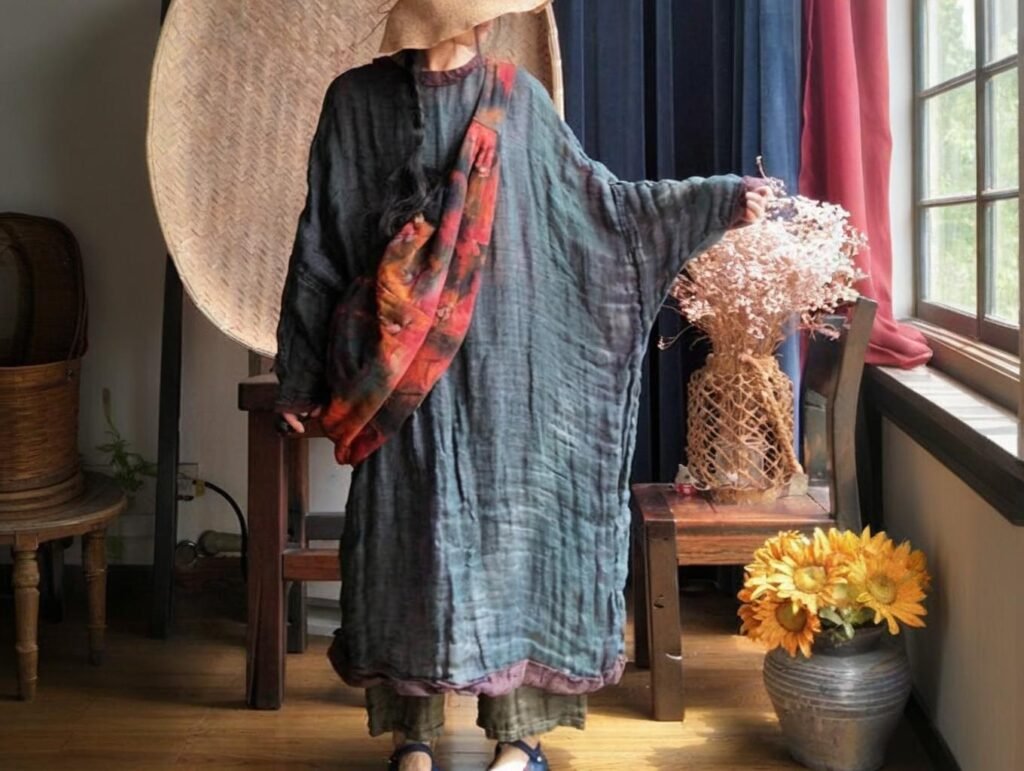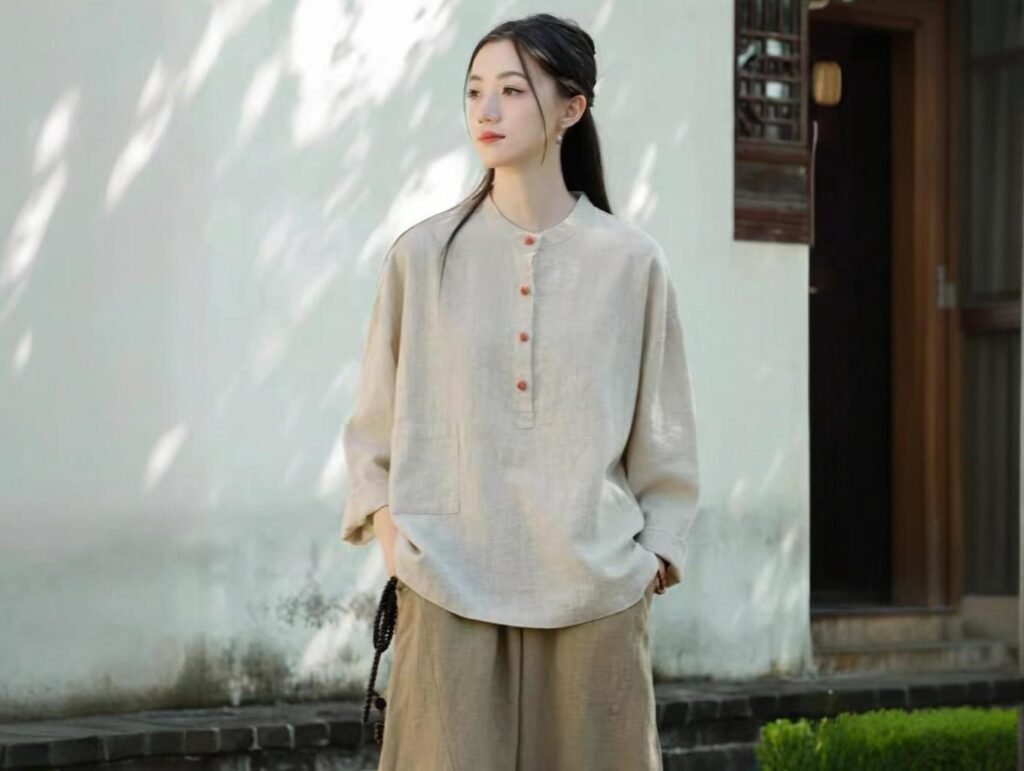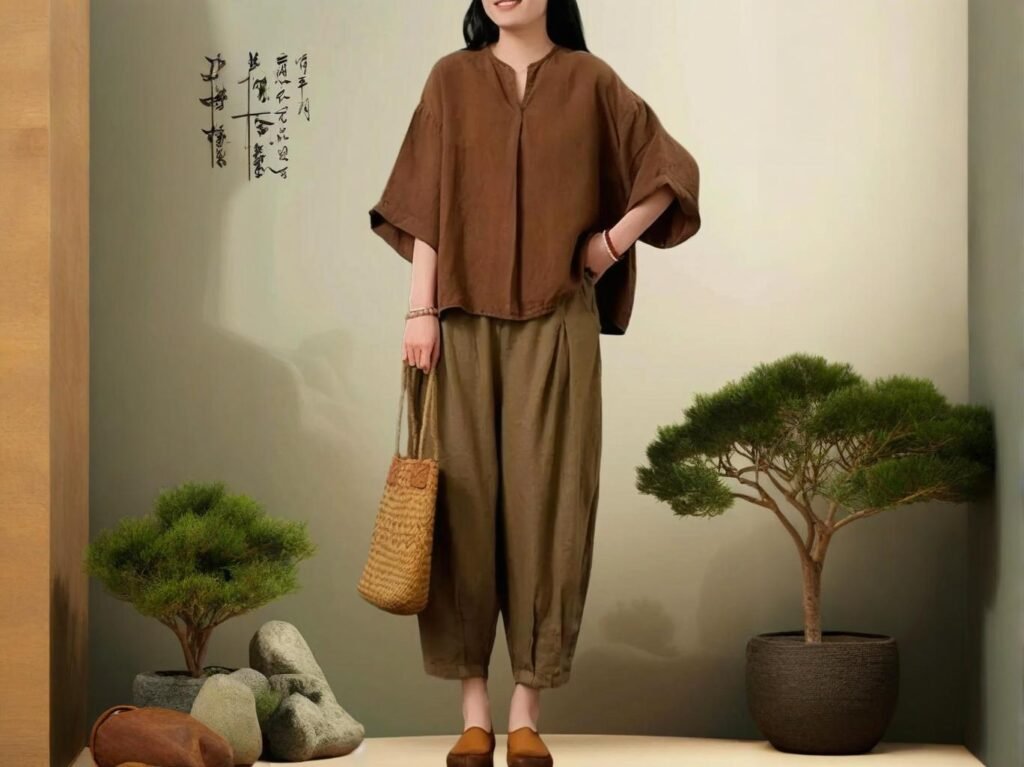
As the global textile industry shifts toward sustainability and transparency, hemp fabric has emerged as a serious disruptor—quietly yet powerfully challenging long-established norms. From fast fashion giants to eco-conscious startups, textile businesses are actively exploring hemp not just for its environmental appeal but for its technical superiority.
Hemp fabric is revolutionizing the textile industry by offering a sustainable, durable, and cost-effective alternative to traditional fibers like cotton and polyester. With faster cultivation cycles, lower environmental impact, and expanding use in high-performance and fashion textiles, hemp is now a serious contender in both volume production and niche innovation.
Let’s look back to a striking example: In 2019, Levi’s launched a line of “cottonized hemp” jeans, blending 70% cotton and 30% hemp. The collection became an industry reference point—proving hemp could meet modern aesthetic and comfort standards while slashing water usage by up to 80%. From there, Patagonia, Stella McCartney, and hundreds of boutique brands followed suit.
In this article, we’ll go beyond the buzz and uncover the real science, economics, and market trends driving this hemp textile revolution—so let’s dive in.
What Makes Hemp Fabric a Game-Changer in Modern Textile Manufacturing?
Hemp fabric is transforming textile manufacturing due to its low ecological footprint, superior durability, natural antimicrobial properties, and versatility across applications from apparel to home furnishings. These characteristics help manufacturers meet rising B2B demand for sustainable alternatives without sacrificing performance or profit margins.
Why the Industry Is Turning to Hemp
1. Sustainability at Scale
- Hemp requires 50% less water than cotton for cultivation.
- It absorbs more CO₂ per acre than forests (up to 15 tons per hectare).
- Grows without pesticides or herbicides.
| Metric | Hemp Fabric | Cotton Fabric | Polyester Fabric |
|---|---|---|---|
| Water Usage (L/kg fiber) | 300–500 | 10,000–20,000 | <100 |
| Biodegradable | Yes | Yes | No |
| Pesticide Need | Very Low | High | None |
2. Performance Benefits
- Tensile strength is 3x that of cotton.
- Naturally UV resistant and antimicrobial.
- Becomes softer with each wash without degrading.
3. Fiber Adaptability
- Hemp can be blended with cotton, silk, polyester, or spandex.
- Easily spun, woven, and dyed using standard textile equipment.
4. Industrial Case Study
- Saitex, one of the world’s most sustainable denim factories, adopted hemp-blended denim to reduce energy and water consumption. Their B2B denim clients in the U.S. and Europe cut costs by 18% on raw materials alone.
How Does Hemp Compare to Cotton, Polyester, and Bamboo in Performance and Sustainability?

Hemp outperforms cotton and polyester in environmental sustainability and beats bamboo in durability and ease of manufacturing. While cotton and bamboo offer comfort and familiarity, hemp brings unmatched lifecycle strength and ecological balance.
Side-by-Side Comparisons That Matter
1. Fiber Strength and Wearability
| Property | Hemp | Cotton | Polyester | Bamboo Rayon |
|---|---|---|---|---|
| Tensile Strength | Very High | Medium | High | Medium |
| UV Resistance | Excellent | Poor | Good | Good |
| Antibacterial | Natural | None | Synthetic | Natural |
| Stretchability | Low (can blend) | High | Very High | Medium |
2. Environmental Impact
- Water Use: Hemp uses up to 90% less water than cotton.
- Chemical Use: Bamboo rayon requires toxic solvents for fiber extraction. Polyester is fossil-fuel based.
- Waste: Hemp leaves zero waste. Entire plant can be utilized (textiles, rope, paper, biofuel).
3. Energy Efficiency in Processing
- Cotton and bamboo demand intensive wet processing.
- Hemp fiber now benefits from enzymatic softening and cottonization—techniques that make it more pliable and machine-compatible.
4. Consumer Appeal in 2025
- A 2024 survey by Textile Exchange shows:
- 68% of U.S. brands plan to trial hemp blends in upcoming collections.
- 42% of European B2B buyers ranked hemp as a “top 3 sustainable priority” in sourcing decisions.
5. Profitability for Manufacturers
- Hemp fabric costs have decreased by 35% from 2018 to 2024 due to scaled farming and processing in China and Eastern Europe.
- Better yield per acre and lower input costs give manufacturers improved margins.
Which Industries Are Leading the Adoption of Hemp Textiles Today?
The fashion, automotive, home furnishing, and wellness industries are currently leading the adoption of hemp textiles, driven by a mix of consumer demand, sustainability mandates, and product performance needs. Each sector is finding tailored use cases—from durable workwear to biodegradable car interiors and antibacterial yoga gear.
Industry Use Cases and Adoption Rates
1. Fashion & Apparel
- Major brands like Levi’s, Patagonia, Stella McCartney, and Outerknown now integrate hemp into denim, t-shirts, jackets, and loungewear.
- Hemp blends offer durability for workwear and a natural, soft feel for premium casualwear.
- Case Example: Levi’s “Cottonized Hemp” jeans reduced water use by 83%, helping them meet their climate goals faster.
2. Home Textiles
- Hemp is gaining popularity in:
- Upholstery
- Curtains
- Towels
- Table linens
- Known for natural texture, breathability, and resistance to mold.
| Product Category | Brands Using Hemp | Market Impact (2024) |
|---|---|---|
| Upholstery Fabric | IKEA, Avocado Green | Rising trend in eco-furniture |
| Bath Towels | Coyuchi, Onsen | Hemp’s absorbency is unmatched |
| Bedding | Brooklinen (limited) | Early adoption in premium sets |
3. Automotive Industry
- Carmakers are using hemp fibers in:
- Door panels
- Headliners
- Seat backs
- BMW, Mercedes-Benz, and Porsche all use hemp composites for lightweighting and reduced carbon footprints.
4. Health & Wellness Products
- Hemp is used in:
- Yoga mats and clothing
- Face masks
- Sleepwear
- Valued for antimicrobial properties and hypoallergenic qualities.
5. B2B and Corporate Branding
- Custom hemp promotional items like tote bags, uniforms, and accessories are growing.
- B2B buyers value low MOQs, natural branding, and eco-alignment.
According to the 2024 Sustainable Sourcing Benchmark, over 60% of eco-brand owners in North America said they’ve already replaced at least one product line with hemp fabric.
Is Hemp Fabric Really Sustainable? A Look at Water, Land, and Carbon Footprint Metrics

Yes, hemp is one of the most sustainable fibers currently available—thanks to its low water usage, carbon sequestration capabilities, soil regeneration benefits, and complete biodegradability. However, sustainability also depends on farming practices and processing methods.
Analyzing Hemp’s Full Sustainability Profile
1. Water Use Efficiency
| Fiber Type | Water Use (Liters per 1 kg fiber) | Source |
|---|---|---|
| Hemp | 300–500 | FAO, 2023 |
| Cotton | 10,000–20,000 | WWF, 2022 |
| Bamboo Rayon | 2,500–3,000 | Textile Exchange |
- Hemp is rain-fed in many regions.
- No irrigation needed in over 60% of cultivation zones.
2. Carbon Sequestration & Soil Health
- Hemp can absorb up to 15 tons of CO₂ per hectare, outperforming trees.
- Deep roots prevent soil erosion and naturally detoxify soil.
| Feature | Hemp Benefit |
|---|---|
| Carbon Footprint | Negative (carbon sink) |
| Soil Impact | Replenishes nutrients, aerates soil |
| Land Productivity | 2–3 harvests per year in tropical zones |
3. Chemical-Free Cultivation
- Requires no herbicides or pesticides.
- Hemp is naturally pest-resistant, reducing toxic runoff.
4. End-of-Life Impact
- 100% biodegradable in landfills or compost within 4–6 weeks.
- Unlike polyester (which can take 200 years), hemp decomposes safely.
5. Sustainability Trade-offs
- Mechanical vs. chemical processing:
- Mechanical retting is eco-friendly but labor-intensive.
- Chemical processing (used for cottonization) may require harsh agents unless enzyme-based.
SzoneierFabrics uses enzyme-based cottonization to soften hemp fibers, reducing water and chemical use by over 40% compared to traditional softening.
6. Certifications for Trust
- Reliable standards for hemp sustainability include:
- GOTS (Global Organic Textile Standard)
- OCS (Organic Content Standard)
- EU EcoLabel
- OEKO-TEX Standard 100
What Are the Key Innovations in Hemp Fiber Processing Technologies?
Modern innovations in hemp processing—such as enzyme softening, steam explosion, and cottonization—have transformed hemp from a coarse industrial fiber to a fine, versatile textile fit for mainstream fashion and technical applications. These breakthroughs are key to hemp’s commercial viability.
Breakthrough Technologies Redefining Hemp
1. Cottonization: Making Hemp Soft and Spinnable
- Cottonization breaks down coarse hemp fibers into soft, flexible strands similar to cotton.
- Achieved using mechanical or enzymatic treatment.
- Enables use in existing spinning/weaving lines—reduces need for equipment overhaul.
| Processing Method | Outcome | Common Use Case |
|---|---|---|
| Enzymatic Softening | Preserves fiber integrity, eco-safe | Apparel, fine garments |
| Mechanical Cottonization | Faster but less soft | Workwear, denim |
2. Steam Explosion (STE) Technology
- Fibers are exposed to high-pressure steam and then rapidly depressurized.
- Breaks lignin bonds for easy separation.
- Reduces chemical use and increases fiber length retention.
Hemp Fortex in China adopted STE tech in 2023, reducing fiber waste by 32% and cutting energy use by 18%.
3. Wet Spinning & Blending Systems
- High-speed wet spinning creates ultra-fine yarns.
- New hemp-blend lines now produce:
- Hemp/modal blends for softness.
- Hemp/polyester for performance wear.
- Hemp/lycra for stretch.
4. Nanocellulose Hemp Applications
- Extracted from hemp pulp, nanocellulose adds strength and biodegradability to bioplastics and smart fabrics.
- Used in sportswear and packaging.
| Innovation | Description | Application Area |
|---|---|---|
| Nanocellulose Hemp | Super-strong, plant-based polymer | Techwear, bioplastics |
| Hemp Viscose | Blended with recycled PET | Fast fashion, leggings |
| 3D Woven Hemp | Used in furniture and architecture | Technical textiles |
5. Automation in Retting and Decortication
- Retting = Breaking stalks to free the fiber.
- Automation reduces labor and increases consistency.
- Smart sensors now monitor moisture and microbial activity for precision retting.
How Do B2B Buyers Benefit from Hemp Fabric in Terms of MOQ, Customization, and Profit Margins?

Hemp fabric offers B2B buyers flexible low-MOQ customization options, higher perceived product value, better margins, and increasing consumer demand—especially in eco-conscious markets like the U.S., Canada, and Europe.
Why Hemp Fabric Makes Business Sense
1. Low Minimum Order Quantities (MOQ)
- Factories like SzoneierFabrics offer custom hemp orders starting from 100 meters per color or 50 pieces per design.
- Blended fabric MOQs (e.g., hemp-cotton) often even lower due to blended supply chain volume.
| Order Size | MOQ at SzoneierFabrics | Typical Lead Time |
|---|---|---|
| Yarn-Dyed Hemp | 200m/color | 12–15 days |
| Printed Hemp Canvas | 100m/design | 10 days |
| Custom Apparel | 50 pcs/style | 12–18 days |
2. Customization Flexibility
- Branding options include:
- Digital or reactive printing
- GOTS-certified dyeing
- Embossed logos
- Custom packaging
- Colorfastness and shrinkage can be optimized for fashion or utility.
3. Higher Profit Margins
- Hemp garments command 20–40% higher retail prices than cotton.
- Consumer perception: “premium + sustainable.”
| Product Type | Average Retail Price (USD) | Fabric Cost (USD/yard) | Margin Multiplier |
|---|---|---|---|
| Hemp T-Shirt | \$40–\$60 | \$6–\$9 | 5–7x |
| Hemp Tote Bag | \$25–\$40 | \$4–\$6 | 4–6x |
| Hemp Bedding Set | \$180–\$250 | \$10–\$13 | 6–8x |
4. Growing Global Market Demand
- The global hemp fabric market is projected to reach \$3.2 billion by 2027, with a CAGR of over 20%.
- U.S. and EU brands are shifting to hemp to meet ESG targets and appeal to Gen Z/Millennial buyers.
A 2023 B2B report by McKinsey found that 58% of sourcing managers consider hemp “essential” to their 2025 sustainable sourcing roadmap.
5. Case Study: Small Business Success
- EarthKind Clothing (Canada) scaled from Etsy to a B2B eco-retailer in 18 months using Szoneier-supplied custom hemp tees.
- Their first order of 100 units led to 3x reorder within 60 days—boosting margin by 45% compared to organic cotton.
Which Certifications (GOTS, OCS, OEKO-TEX) Validate the Credibility of Hemp Textiles?
Certifications such as GOTS, OCS, and OEKO-TEX play a crucial role in validating the organic, chemical-safe, and socially responsible nature of hemp textiles—ensuring credibility for both B2B buyers and conscious consumers. These certifications are now expected by most international buyers and retailers.
Understanding Each Certification
1. GOTS – Global Organic Textile Standard
- Covers entire supply chain: farming, processing, dyeing, packaging.
- Requires at least 70% certified organic fibers.
- Restricts toxic inputs (e.g., heavy metals, formaldehyde).
- Ensures fair labor practices.
| Criteria | GOTS Certification Requirement |
|---|---|
| Organic Fiber Content | ≥70% (label grade 1), 95%+ (grade 2) |
| Chemical Restrictions | Strict (no AZO dyes, heavy metals) |
| Social Criteria | Yes (ILO-based labor standards) |
2. OCS – Organic Content Standard
- Focuses on content validation, not processing.
- Verifies organic fiber presence (from farm to finished fabric).
- Lighter-weight certification compared to GOTS.
| Difference from GOTS | OCS Focus |
|---|---|
| Processing Safety | Not audited |
| Chemical Use | Not restricted |
| Organic Content | Verified only (no min required) |
3. OEKO-TEX® STANDARD 100
- Tests finished fabric for harmful substances.
- Covers over 100 parameters (e.g., pH, pesticides, VOCs).
- Common for baby products and apparel sold in Europe.
As of 2024, over 32% of certified hemp fabric globally was GOTS-approved, with China and India leading production.
4. Other Key Certifications to Know
- GRS (Global Recycled Standard): Used for blends that include recycled hemp.
- EU Ecolabel: Recognized for product lifecycle sustainability across the EU.
- USDA Organic: Relevant for U.S. hemp farmers.
5. Why Certifications Matter for B2B Buyers
- Helps pass supplier audits for brands like H\&M, IKEA, and Patagonia.
- Increases retail buyer confidence.
- Adds perceived value in branding and marketing.
At SzoneierFabrics, all hemp production can be made GOTS- and OEKO-TEX-compliant based on client needs—ideal for export-focused buyers.
What Future Trends Are Shaping the Global Market for Hemp Fabric?

The global hemp textile market is being shaped by sustainability legislation, rising demand for regenerative materials, biotech-enhanced hemp fibers, and new hybrid applications across industries. These trends point to explosive growth and mainstream adoption in the next 3–5 years.
2025–2030 Market Outlook
1. Sustainability Regulations Are Driving Demand
- The EU Strategy for Sustainable Textiles (2022–2030) mandates eco-design, circularity, and traceability.
- The U.S. Inflation Reduction Act incentivizes green supply chains.
- Global brands must now trace fiber origin—boosting hemp’s value due to farm-level transparency.
| Policy | Region | Impact on Hemp Textiles |
|---|---|---|
| EU Green Deal | Europe | Higher sourcing standards |
| Carbon Border Tax | Global Import | Favoring low-impact materials |
| France AGEC Law | France | Promotes recycled and bio-based |
2. Biotechnology and Smart Hemp Fibers
- Hemp fibers are now being enhanced with:
- Anti-microbial treatments
- Moisture-wicking nanotechnology
- Phase-change materials (for temperature control)
Japanese startup FabTechBio developed hemp-based sportswear with embedded cooling tech—launched in 2024 with high pre-orders from U.S. B2B retailers.
3. Blends with High-Tech Fibers
- Hemp is increasingly blended with:
- TENCEL™ (for breathability)
- Recycled PET (for stretch & strength)
- BCI Cotton (to reduce cost and improve feel)
4. Rising Regional Production
| Region | 2024 Production Volume (MT) | Leading Export Use |
|---|---|---|
| China | 65,000 | Apparel, canvas, denim |
| India | 28,000 | Home textiles, artisan fabrics |
| Europe | 15,000 | Technical textiles, furnishings |
5. Global Demand Projections
- CAGR of 21% from 2024 to 2029.
- Hemp fabric expected to reach \$4.1B USD by 2029.
- Demand strongest in:
- U.S. eco fashion
- EU home furnishings
- Southeast Asia’s D2C wellness brands
Ready to Source Sustainable Hemp Fabric for Your Brand?
At SzoneierFabrics, we’ve helped hundreds of B2B clients—from niche designers to large-scale retailers—develop custom hemp fabric solutions that are as responsible as they are profitable.
With:
- ✅ Free design support
- ✅ Low MOQ starting from 50 pieces or 100 meters
- ✅ Fast lead times (as short as 10–15 days)
- ✅ Support for GOTS, OEKO-TEX, and OCS certification
- ✅ A wide range of hemp blends (hemp/cotton, hemp/linen, hemp/polyester, and more)
We invite you to explore how hemp fabric can elevate your next product line—whether it’s fashion, packaging, home décor, or performance gear.
👉 Contact SzoneierFabrics today to request free samples, get a fast quote, or speak to a textile specialist.

